Proper crisp and crumbly pastry encasing rich and succulent mincemeat. This Dairy-free, Gluten-free and Paleo recipe is made with an almond and lard pastry.
| Skip straight to the recipe |
01. What are mince pies?
Mince pies are a traditional British sweet that are eaten around Christmas time. They are made by soaking an assortment of dried fruits and citrus peel in brandy and aromatic spices to create the ‘mincemeat’ filling. A generous amount of shredded beef suet is also added to the mix. This melts in the oven to create a uniform texture and a richer mouth-feel, and helps to meld all the fat-soluble flavour compounds together. The filling is then spooned into small, individual pastry cases and baked in the oven. It is best to be generous with the mincemeat filling, but shallow tart trays product the best ratio between crisp, dry pastry and succulent, rich filling. Mince pies are usually baked by the dozen, and are best eaten warm from the oven before the suet fat cools and solidifies into unsightly white lumps.
02. Can you make a convincing gluten-free mince pie?
Mince pies are well suited to gluten removal. At first glance, wheat flour would seem integral to creating a pliable pie crust that can be moulded into shape and that holds together. However, ‘pie’ is somewhat of a misnomer for this Christmas sweet. Mince pies are not baked in a pie tin and served in slices, but pressed into individual tart cases (if anything, mince pies are a sort of covered tart). This compact structure means that they are less prone to falling apart. But crumbliness is not a problem for mince pies, since the pastry is supposed to behave in this way.
03. What type of pastry do you use to make mince pies?
Mince pies are usually made with a shortcrust pastry comprising of 1 part fat to 2 parts flour, which is brought together with a little cold water. The term ‘short’ describes the length of the gluten proteins, which are deliberately inhibited from developing in order to create a weaker structure. This creates a crumbly texture that falls apart and flakes. Shortcrust pastry is made with stable fats that remain solid at room temperature. Unlike oil, these fats cannot be stirred into the mixture. Instead, they much be rubbed into the flour, creating a crumbly mixture that resembles breadcrumbs. The rubbing action coats the flour particles with a layer of fat, which stops them from binding together.
04. What dairy-free fat can I use to make pastry?
In order to create a short pastry, as little liquid as possible is added – just enough water to bind together the fat and flour into a pliable dough. Lard gives the shortest, crispest texture since it is 100% fat, whereas butter is 20% water. However, a combination of butter and lard is preferred, since butter adds richness and flavour. Lard used by itself results in a rather tasteless pastry. In order to enrich lard-only pastry, you can add an egg yolk, which will improve the mouth-feel and impart a pleasant eggy flavour. You can also use heavier protein flours that have a distinctive flavour, like nut meal, or wholegrain flours like buckwheat and oat flour.
05. What gluten-free flour can I use to make pastry?
Wheat flour is strong, elastic, absorbent and neutral-tasting. This explains why no one ingredient works as a direct replacement, because no one ingredient combines all four of these functions. Shop-bought gluten-free flours are actually a blend of several flours, typically comprising brown rice flour, white rice flour, tapioca flour and potato flour – plus a binding agent like xanthum gum or psyllium husks. The key to successfully replacing wheat flour is to replicate the protein and starch structure. This can only be achieved by using a combination of protein flours and powdered starches. Protein provides body or density, but needs to be balanced by starches for lightness and hydration. (Read my Guide to Replacing Wheat Flour with Gluten-free Flour for more information.)
- strength: egg replicates the sticky properties of gluten, as the proteins contained in the whites coagulate to form a solid mass when heated. Honey is also physically sticky.
- elasticity: tapioca flour is a neutral-tasting starch, which becomes gelatinous when mixed with water, creating a pliable texture. It needs to be used in combination with a heavier flour to avoid gumminess.
- hydration: coconut flour is incredibly absorbent. This means that it is good for creating stiffer mixes, by wicking up excess moisture. It also means that it should be used very sparingly (typically no more than 2 tablespoons). You shouldn’t need to add any water to this recipe, as egg whites are used, which are mostly water.
- flavour: almond flour lend a subtle nutty flavour to pastry, which works very well with a mincemeat filling. However, it is too dense by itself, and does not hold together.
06. What oven temperature should I use for cooking pastry?
Traditional shortcrust pastry made with wheat flour is usually cooked at 200°C/400°F, in order to encourage browning. Browning happens when proteins and sugar react with with one another to form a flavoursome crust. Browning requires a high temperature, as it can only happen once all the water has been driven out from the surface area by evaporation. However, almond flour browns faster than flour, and honey also accelerates browning. This means that a lower cooking temperature is used when baking with almond pastry that has been sweetened with honey (170°C/340°F).
Tips & Tricks
- Don’t add too much liquid – the pastry should just about hold together, and should not feel overly wet and sticky. If you overdo it, add more flour, a little at a time, until you get the right consistency.
- Rest the pastry – manual handling naturally melts some of the fat. By giving the fat time to resolidify, it is easier to roll out and will hold its shape better in the oven.
- Use a tray with shallow moulds, and not a muffin tray – the pastry will break apart if you try to press the discs into deep moulds.
- Cut a small slit in the top of each pie – this allows the steam to escape, which stops the pastry from becoming soggy
Ingredients
- 450g mincemeat
- 150g extra fine almond flour (this is not the same as ground almonds, being de-oiled, de-skinned and more finely ground: buy here or make your own)
- 90g tapioca flour, plus extra for flouring a work surface
- 35g coconut flour
- 1/2 teaspoon fine salt
- 135g lard
- 2 tablespoons (35g) honey
- 1 egg, lightly beaten with a fork
for greasing the baking tray:
- 1 teaspoon lard, melted
Instructions
- Make the dough. Sieve the flours into a mixing bowl. Add the salt and give the whole lot a stir to blend.
- Add the honey and lard. Use your fingertips to lightly rub in the honey and lard, until you achieve a crumbly texture that resembles breadcrumbs.
- Tip the beaten egg into the mixing bowl. Mix with a butter knife, and then with your hands. Press together to form a slightly sticky dough. If the dough does not quite come together, add a small amount of cold water, a tablespoon at a time, until it just holds together. Knead into a ball then transfer to the fridge. Leave to rest for 30 minutes.
- Preheat the oven to 170°C/340°F. Lightly grease a 12-hole tart tray / shallow bun tray.
- Generously dust a work surface with tapioca flour. Turn out the dough, then sprinkle more tapioca flour on top. Use a rolling pin to roll out to about 1/2 cm thick. Cut out the bottoms using a large, fluted cutter (I used a 9 cm / 3.5 inch cutter). Collect up the trimmings into a ball, and repeat until you have cut out 12 discs. Use a palette knife to lift off the board, and gently press into a mould, smoothing up the sides. Spoon in the mincemeat, all the way to the top.
- Repeat for the lids, using a smaller cutter (I used a 6.5 cm / 2.5 inch cutter). Use a butter knife to cut a small slit in each one. Cover the mincemeat with a top, gently pressing down to seal the edges (it doesn’t need to be a perfect seal).
- Transfer to the lowest shelf of the preheated oven. Bake for 15-17 minutes, until crisp and golden on top. Turn the tray halfway through for even colouring.
- Carefully transfer onto a wire cooling rack using a palette knife. Allow to cool for 20 minutes before eating. Best eaten warm from the oven, but will keep for 1 week stored in an airtight container at room temperature.

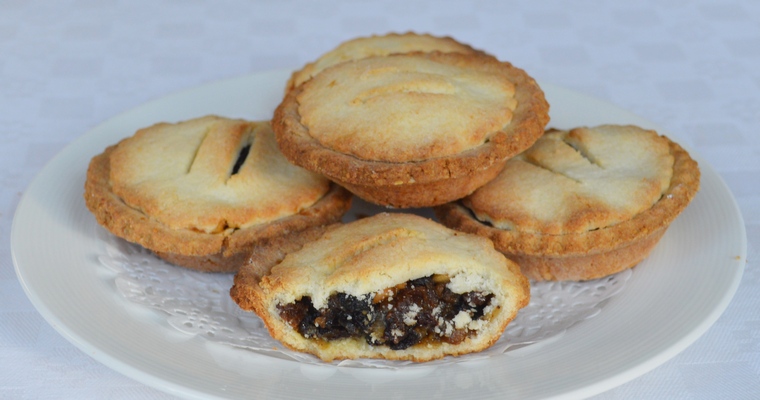
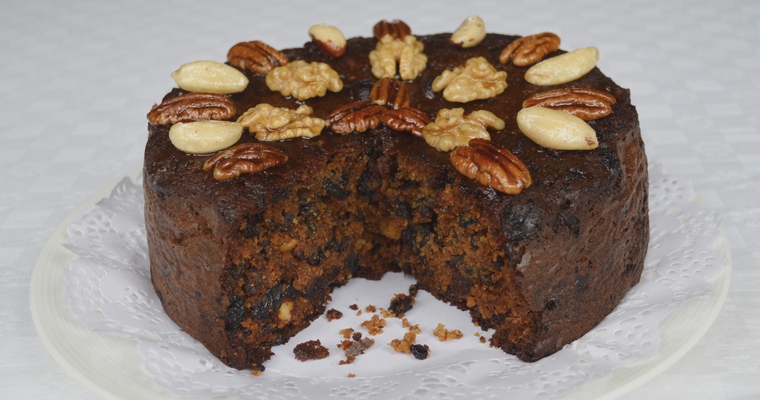
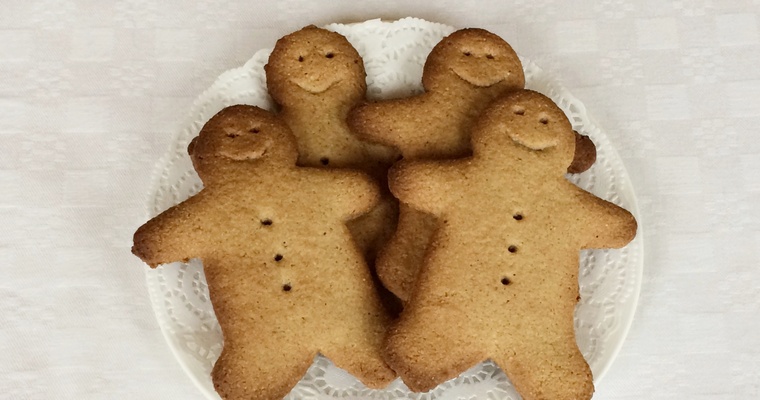
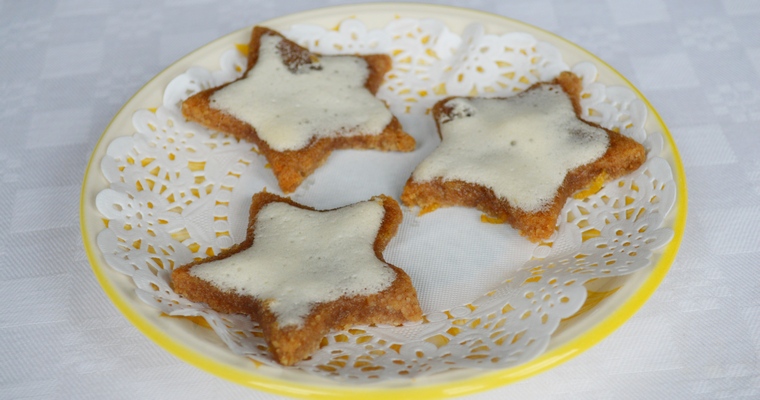
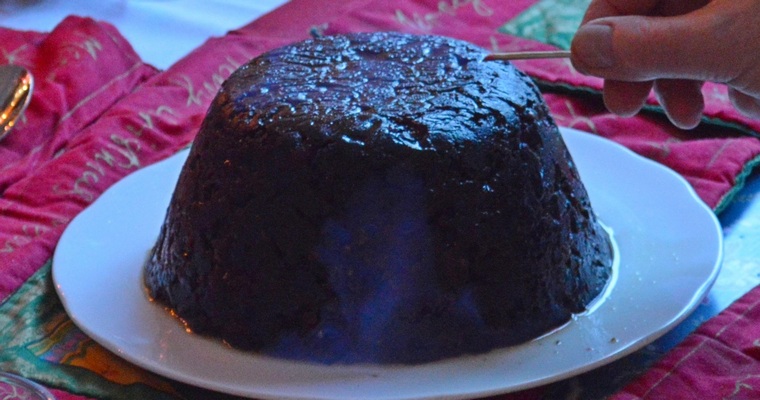
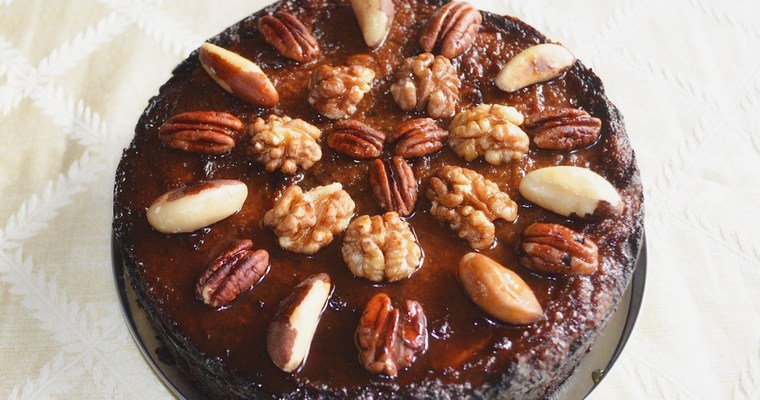

It’s getting too close to Christmas so I hope you can find and answer this question soon!! Under your recipe Gluten-free Mince Pies (made with Dairy-free almond pastry) -can this be used for a 9″ double crust dessert pie? Too blatantly .. need this be amended to fit a two crust pie? Umm, I get the 2 tsp = the 35g’s for the honey and flour but how much non metric is 135g’s for the lard?? This isn’t for me I can eat most anything! It’s my wife who needs eat Paleo!
Before it’s too late for xmas baking, Help!!
I’d be a bit cautious about using gluten-free pastry for a full-size pie – as I’m sure you’ll have experienced for yourself, gluten-free pastry can be quite crumbly without those elastic gluten strands holding everything together! You could try to prevent the pie from crumbling when sliced by allowing it to cool for at least 20 minutes in the tin before attempting to serve, and also being very gentle and using something like a cake slicer / fish slice to lift out the slices. 1 cup of larg = 210g, so 135g of lard = 5/8 cup.
I’m sorry for the late reply – the run up to Christmas has been hectic in our household!